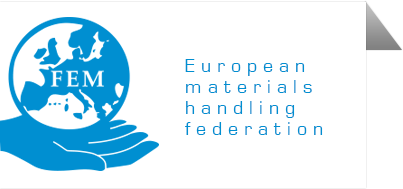 FEM companies are committed to integrating environmental principles into each stage of the life cycle of their products (from production and transport to use, maintenance and end-of-life recycling). The combined action of regulatory requirements and industrial innovation has substantially reduced the environmental impact of materials handling equipment. For instance an industrial truck or an aerial platform produced today emits 95% less particulate matter and 96% less nitrogen oxide than one produced 10/15 years ago. Consequently, the oldest machines are now responsible for the largest share of pollutant emissions.
FEM companies are committed to integrating environmental principles into each stage of the life cycle of their products (from production and transport to use, maintenance and end-of-life recycling). The combined action of regulatory requirements and industrial innovation has substantially reduced the environmental impact of materials handling equipment. For instance an industrial truck or an aerial platform produced today emits 95% less particulate matter and 96% less nitrogen oxide than one produced 10/15 years ago. Consequently, the oldest machines are now responsible for the largest share of pollutant emissions.
We believe that environmental legislation should prioritise the most severe and relevant environmental impacts, and realistically balance them with the impact on companies’ competitiveness. Legislation should take a holistic approach that assimilates the different sets of requirements applicable to the same equipment, to avoid regulatory overshoot.
Key messages
>>> Incentives should encourage users to switch to more environmentally-friendly equipment
>>> Environmental considerations should be balanced against the need to preserve our companies’ competitiveness
>>> A consistent approach must be taken on different types of environmental requirements applying to the same equipment

